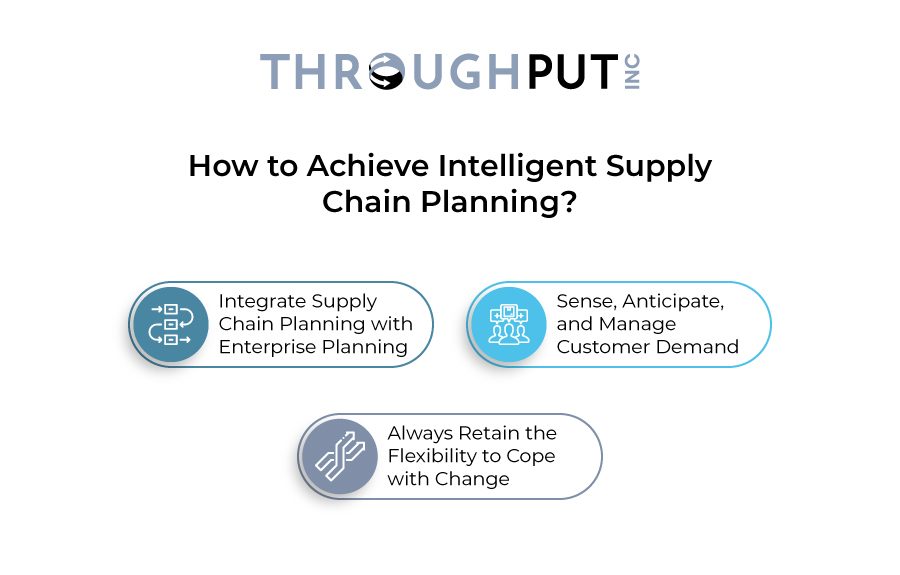A Complete Guide to Real-Time Supply Chain Planning

Despite the most meticulous planning, a majority of the major “incidents” in today’s global supply chain occur in the moment – meaning that there’s little scope for advance or even just enough of a heads-up or warning.
Granted, many modern companies deploy “intelligently planned” programs and distribution strategies to ensure on-time delivery and customer satisfaction.
Yet, due to the sheer number of variables that influence the average industry (including large and varied network partners) alone, businesses are often playing catch-up by way of responding to bottlenecks, breakdowns, or any number of other planning and production hurdles.
What is the Importance of Real-time Supply Chain Planning?
This is why the value proposition offered by the insights of real-time data analysis make a massive difference in an integrated supply stream – it helps take faster, better decisions, while also helping prioritize tasks effectively.
Whether in terms of planning strategy, procurement of material, job-facility distribution, container-warehouse management, or distribution of finished product, the real-time insights into demand and supply planning afforded by intelligent, integrated planning and forecasting solutions have time and again proven to be a gamechanger for sales and OP teams in achieving efficiency and productivity.
Agile Demand and Supply Chain Planning are Keys to Business Resilience
It should be noted that the constraints – and therefore the rules – of production plans or even customer orders are fluid, and can often change in the time between when a material/ component arrives at the production site and when production actually begins.
Thus, businesses need to achieve highly agile operational capabilities to become responsive to the varying dynamics of planning and production processes. The development and imbibing of real-time capabilities arms businesses with the flexibility to compete effectively in an increasingly volatile business environment.
By immediately sensing changes in demand, supply, and business conditions while simultaneously leveraging advanced analytics, planning and execution can truly be integrated, leading to the realization of achieved.
In short, the importance of real-time decision-making in today’s globally-connected supply chain ecosystem cannot be more real.
To understand better, let’s take a closer look at and discuss the benefits of real-time supply chain planning and management, and the ways in which businesses can convert real-time capabilities into unbeatable competitive advantage.

Pre-requisites for Real-time Supply Chain Planning
For true supply chain agility, real-time planning must be incorporated into each of the following four phases.
1. Procurement
This involves vendor integration, resulting in efficient, effective sourcing of material with the help of strategic partnerships and cooperation. With the help of intelligent big data analytics, vendor performance is continually evaluated and improved, via either of the following two approaches:
Top-down, wherein short-term demand forecasts and plans for required materials are shared, or
Bottom-up, wherein there is high transparency into capacities, just-in-time delivery schedules, and flexibility of requirement fulfillment.
2. Production
This refers to smart factories with highly connected and automated machines that help accelerate production efficiency. Predictive maintenance is a common feature in this setup, allowing for seamless integration across the production cycle – planning, maintenance, as well as quality management.
The hyper-connectivity of all the production layers and systems ensures the required transparency at this stage into machine and process parameters, machine efficiency, and labor and stock availability.
3. Sales
This involves customer integration, with smart products that enable smart services to be sold to intelligently targeted audiences. It ranges from production integration for single-piece production and scales up to agile demand planning and order fulfillment at high production variances.
This entire process requires intelligent big data analytics of customer data in the form of not just needs and preferences but also habits and constraints.
4. Distribution
In combination with sales planning, this is referred to as the sales and operations (S&OP) planning stage. At the distribution stage, businesses leverage smart logistics, including highly connected and automated haul vehicles and distribution centers, for distribution to warehouses as well as end-users.
With the integration of delivery partners and deployment of artificial intelligence (AI)/ machine learning (ML) for intelligent analytics for smart warehousing and goods transportation, on time, in full (OTIF) deliveries become a whole lot easier and more frequent than before.
Control Over Demand
Real-time data and insights not only afford businesses the opportunity to view and track up-to-the-minute needs and demands from customers, it also helps them plan and manage any potential slowdowns or bottlenecks across the entire length of their supply chain stream.
Real-time visibility into overall demand can also help businesses identify trends or fluctuations in customer need for parts or products, allowing them to adjust production plans and/or plant-product line allocations ahead of these fluctuations to significantly impact production output and business outcomes.
For example, real-time demand and supply planning capabilities can help a business in France detect a downward trend in demand in Germany, and accordingly reallocate materials and resources to not only adapt to the trend, but make the most of it while also actively preventing overstocking and wastage.
How to Achieve Intelligent Supply Chain Planning?
To succeed in an increasingly competitive global market, businesses must adapt effectively and look for simple, practical ways to connect their supply chains from start to finish. This process of achieving connected supply chain planning involves the following steps.

1. Integrate Supply Chain Planning with Enterprise Planning
A critical second step once real-time supply chain planning has been achieved is the process of connecting traditionally siloed supply chains with not just sales and operations planning but also financial planning.
Businesses that integrate their short-term operational plans with their wider, longer-term business planning processes to enable real-time updates to inventory forecasts (as well as supply) benefit greatly from unprecedented visibility at an enterprise-wide level.
Deploying real-time S&OP solutions encourages and enables enterprise-wide collaboration. This in turn means that key stakeholders across the business can evaluate new scenarios and rapidly analyze how to optimize the use of their resources to maximize profitability even in the face of unforeseen incidents.
2. Sense, Anticipate, and Manage Customer Demand
Particularly for consumer-packaged goods businesses, sensing the “what” and “when” of customer demand is an ongoing challenge.
Smart supply and demand planning affords such companies end-to-end visibility across the entire supply chain ecosystem, going beyond their network of wholesalers and retailers to directly sense demand signals from customers.
When such businesses can rapidly identify changing buyer sentiments and analyze how these changes impact product demand, the benefits are multifold – and they affect the business itself, its partners, and customers alike, leading to dramatically improved profitability, margins, and lead time.
3. Always Retain the Flexibility to Cope with Change
With the right technology to plan efficiently and react quickly, disruptions are no longer disruptive, because re-forecasting and re-planning is easy. In turn, businesses will notice precious resource savings as well as accelerated profitability.
Real-time Demand and Supply Planning is Today’s Endgame
In today’s globally crisis-prone market, there’s no such thing as a sure-shot strategy when it comes to demand planning and production. Businesses are therefore always on the lookout for ways to increase their planning and production efficacy so that they can achieve continuously increasing growth, productivity, and profitability.
Real-time demand and supply planning creates an event-based approach to deviations between projections and actual sales or production programs.
Leveraging notifications of deviations to alter and adapt production programs for on-time delivery and delighted customer experiences is the true value proposition of real-time supply chain planning.
Confused about where to start with your real-time journey? Give us a shout, we can help!


